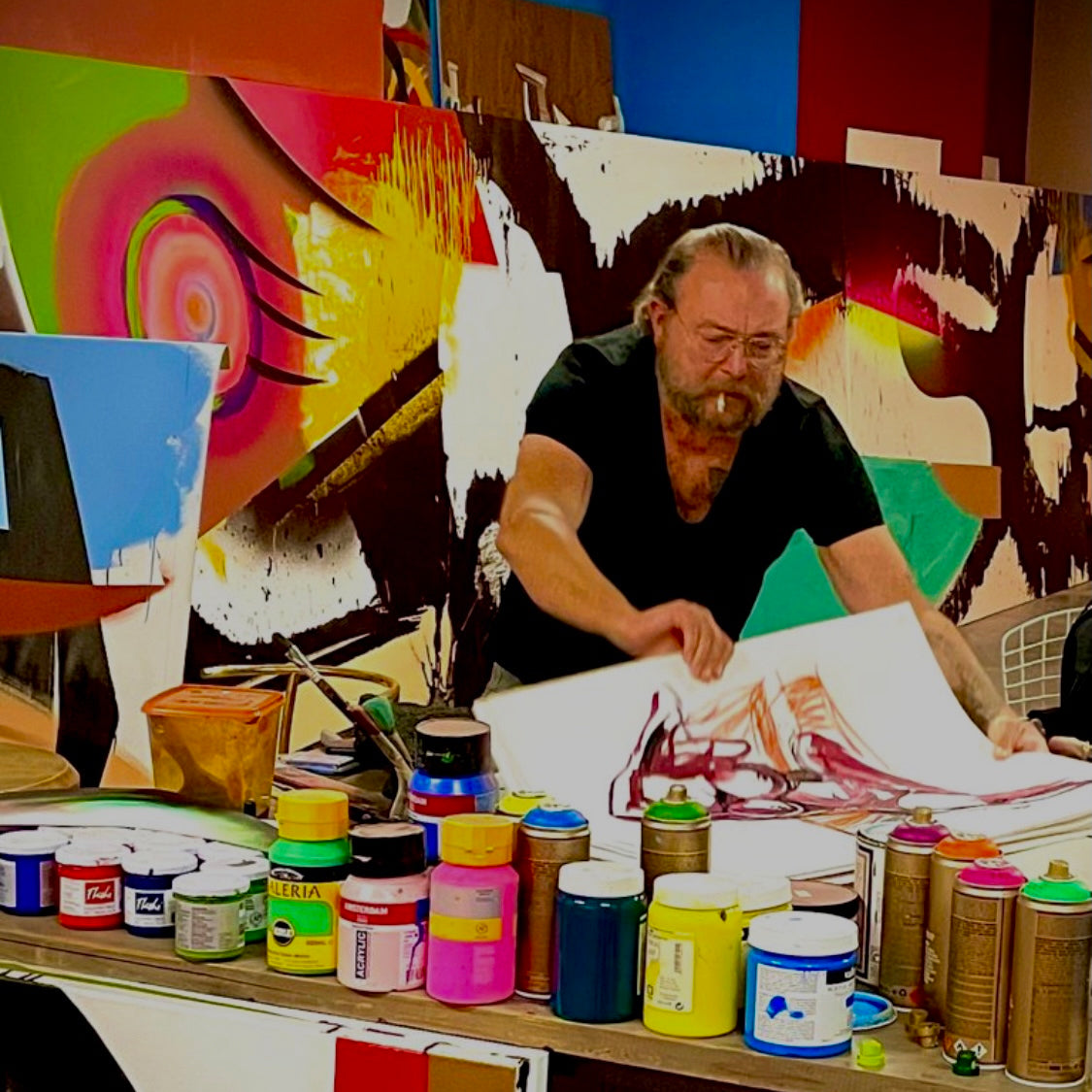Marco Reichert (born 1979) is an abstract artist who lives and works in Berlin. He studied Fine Art and Painting at the Kunsthochschule Berlin-Weißensee and exhibits his artworks throughout Europe. How did you get into art?
How did you get into art?
I've always loved to draw and back in the early days of home computers like the C-64 and Amiga, I got into trying out different ways of combining traditional and digital techniques. Although my academic journey began with computer science, my deep-seated passion for visual expression eventually steered me toward the world of painting. The fusion of these interests became particularly evident during my dedicated studies in painting.
How would you describe your style? What makes your work special?
My artistic approach centers on navigating the intersection of classical painting and the influence of diverse digital media. While this is fortunately no longer a unique attribute in today's art landscape, what distinguishes my work is the physical incorporation and integration of the digital aspect onto the canvas. The painting machines I construct, and program play a crucial role, often enhancing the structures and surfaces derived from process-based painting. The resulting interaction between the treated surface and the amateurish construction of these machines creates a disturbance that defies clear categorization as purely analog or digital. How do you go about developing your work?
How do you go about developing your work?
Usually, I start a new painting without a strict plan in place. It begins with a nebulous concept—a form, a color contrast, or a delicate sense of balance or imbalance. This openended approach allows the process to unfold organically and leads to discoveries in each piece. The material usually takes the lead at the beginning, guiding my responses. As time progresses, a composition forms organically, and I work to interact with it through my painting machines. Who or what influences you?
Who or what influences you?
First and foremost, I also look for disturbances in the system outside of my work. Like my painting process, in which I try to give enough space to surprise myself, I am interested in irregularities that are difficult to predict. These can be visual but also in music/sound or any other expressive form.
So, the main influence is “glitch”.
Make us curious. What are you planning to do next?
Right now, I'm deeply involved in getting ready for two exhibitions in Europe scheduled for 2024. These exhibitions will cover both institutional spaces and traditional galleries. Also, I'm thankful for the chance to take part in two residencies throughout 2024. Another notable change is on the horizon—I'll be moving into a new studio. This change in workspace is expected to directly influence my creative process, like the transformative influence of residencies. Learn more about the artist:
Learn more about the artist:




